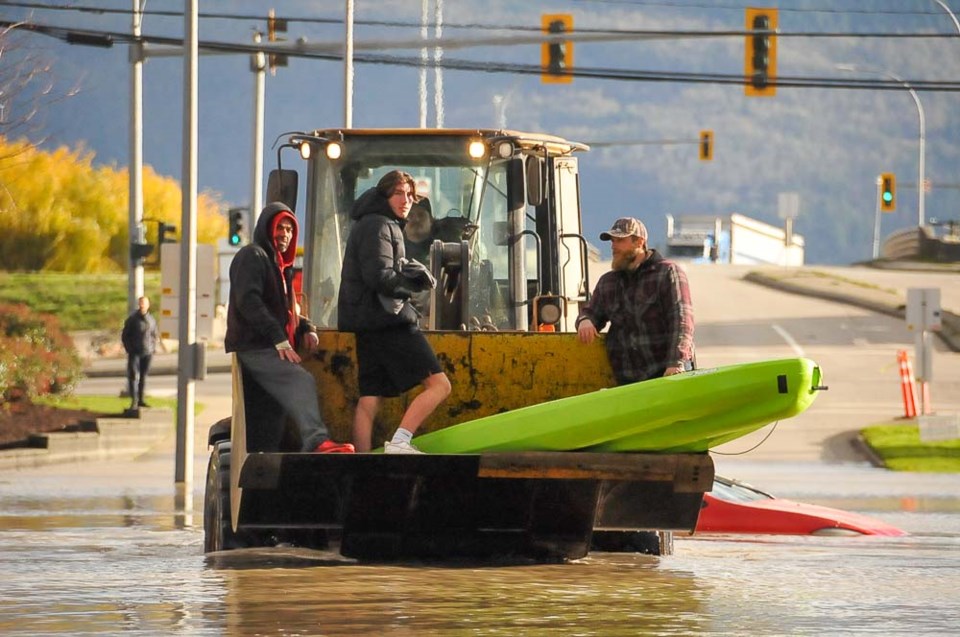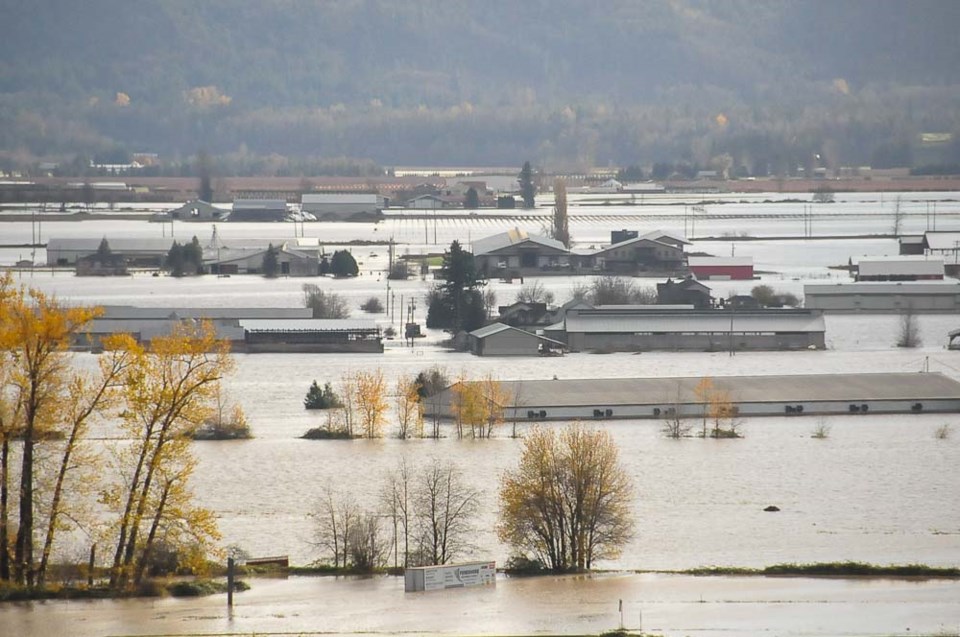Find an update to this story .
***
On Monday night, Karter Thandi parked his car next to the Royal Bank on Old Yale Road, walked down the hill and peered out over the deepest floodwaters he'd ever seen in 46 years since living along the Sumas River.
Heavy rapids ripped through a channel separating his house from a highway overpass. Thandi stepped into the water and began swimming.
"I had to get across. I couldn't leave my family alone there," said Thandi.
Along with his aging mother and brother, Thandi was among 1,100 households the Sumas Prairie region of Abbotsford, B.C., Tuesday, after over 200 millimetres of rain — as much as the town gets in the entire month of November — fell in the space of 48 hours.
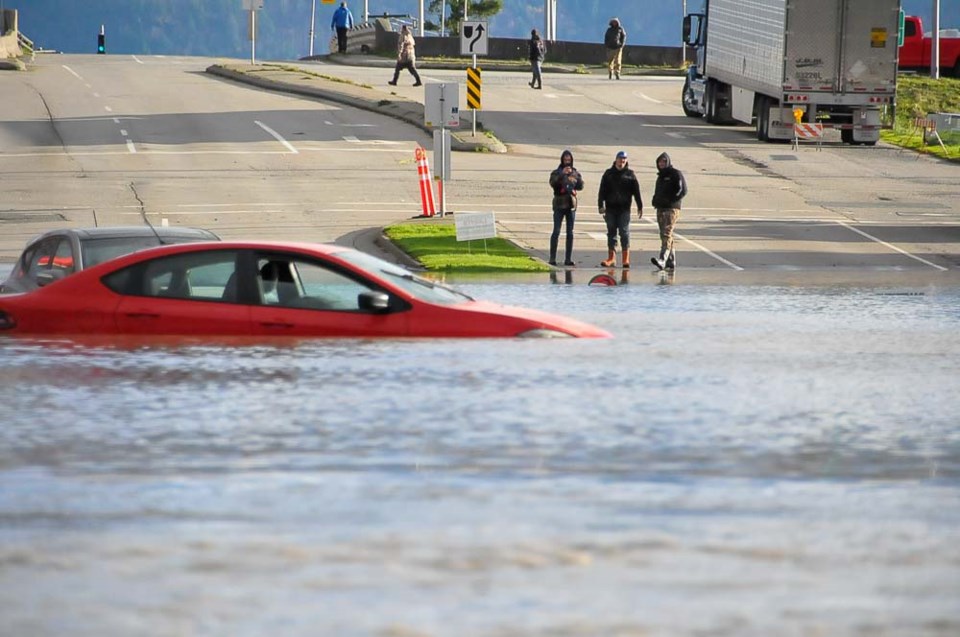
In other corners of the province, thousands of British Columbia's evacuated the entire City of Merritt, and in Princeton, hundreds were forced to leave their homes. Landslides that trapped hundreds across B.C. highways in recent days have now been blamed for the death of at least one woman.
In Abbotsford, massive tracts of farmland known for rich blueberry harvests and dairy cows lay under a vast blanket of water.
“Conditions within the last hour have escalated and pose a significant risk to life,” warned the city Tuesday evening.
A local emergency operations centre warned a pump draining the floodplain of water would fail within hours.
All residents need to abandon their efforts to save livestock and leave the area immediately, said the city. Anyone needing help should call 911 and report their location immediately.
“The Fraser River will enter the Sumas Prairie area,” wrote the city in a release.
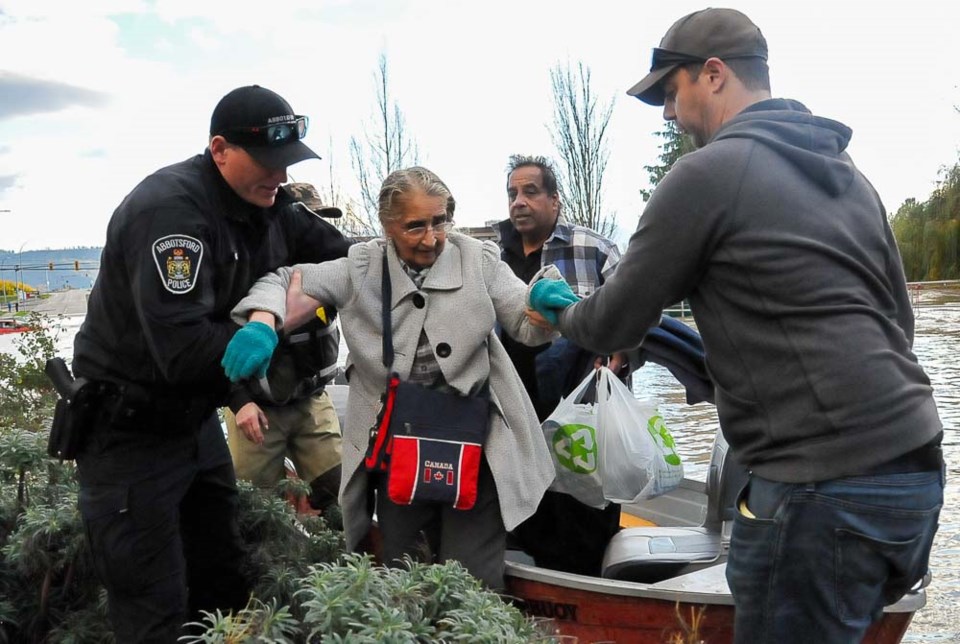
Aaron Sutherland, vice-president of the Insurance Bureau of Canada, says it will take a least a month to assess how much the flooding will cost B.C.
"It's clearly extensive and is clearly the most significant flood event because this province has seen in a very long time," he said.
That damage and played out in real-time Tuesday as surging water tore around Thandi's house.
"We had 20 minutes. It came so fast. It was in the field, and then it started bashing in the door," he said. "We never knew if the house was going to come off the foundation."
That foundation started to give way by Tuesday afternoon. Around the home, fast-moving water ate at the power polls. That's when Thandi grabbed his mother and waved down a passing skiff.
"We've got no heat. There's seven feet of water downstairs," he told Glacier Media as he stepped onto a boat a neighbour had earlier used to ferry another 80 people to dry land that day.
Like many brought to safety, they were met by welcoming neighbours with blankets, food, milk and even board games. Across town at a public works yard, volunteers spent hours filling sandbags for neighbours.
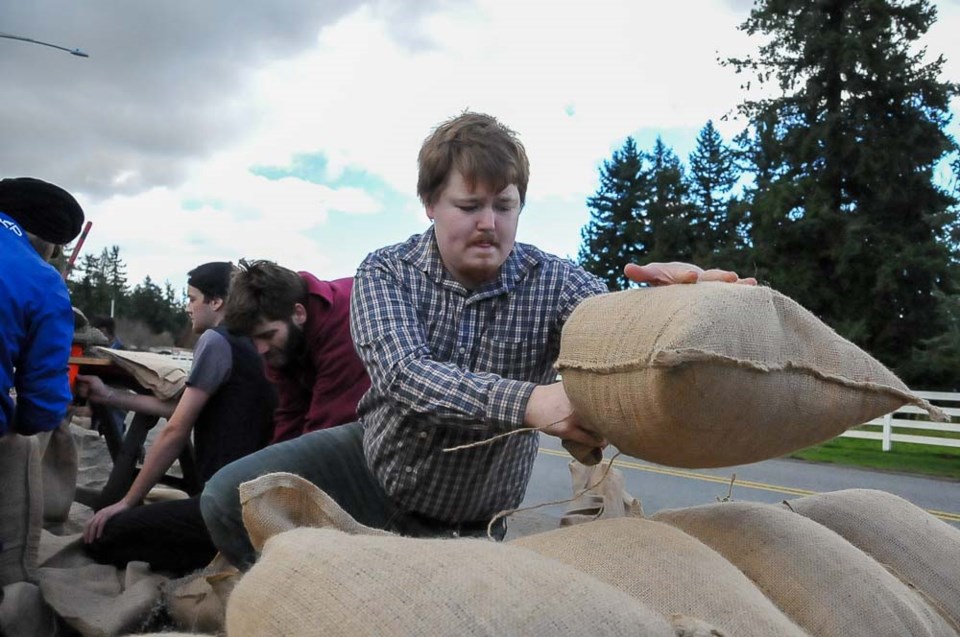
The floodwaters also made possible several surreal scenes — under a sunny sky, heavy machinery blew through deep floodwaters and jet boats roared down Highway 1, whipping up wakes next to flooded cars.
Amanda Thiessen looked over the scene from a bridge where she was trapped with her family as they fled their nearby farm.
"The water came up onto the road, and I saw my mice scurrying back and forth trying to escape," she told Glacier Media.
Trapped, the family has been camping in an RV on the overpass. They're prepared to wait days for the water to subside.
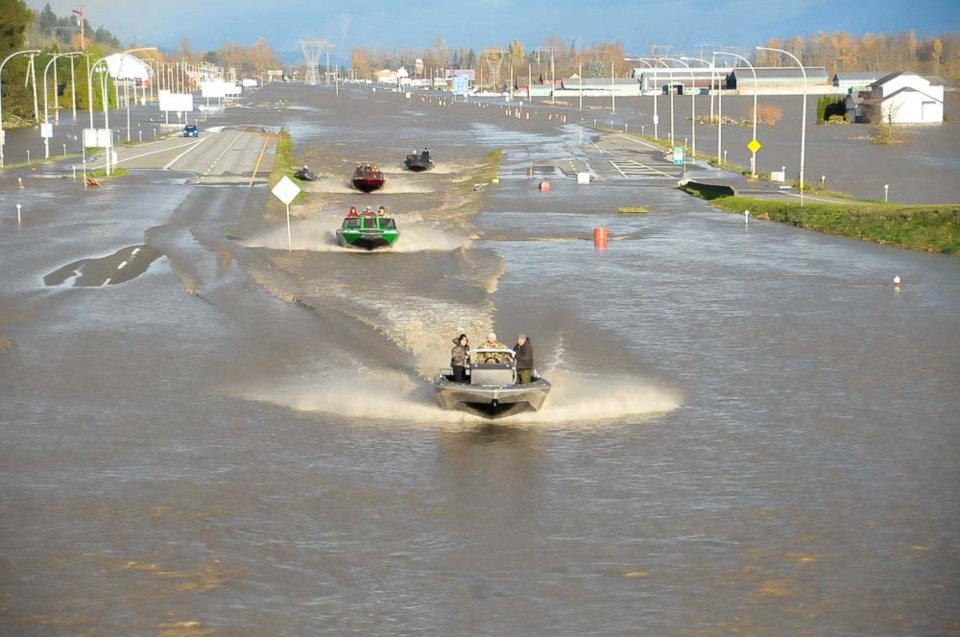
Emergency officials and locals estimate over 200 people were trapped on the overpass adjacent to two gas stations Monday night. Many had their path blocked when they turned to back-roads after the highway flooded.
Ben J. was on his way home to Surrey from Chilliwack, where he runs a barbershop. As the waters rose on the highway, he followed a line of cars looking for an alternative route.
"The water was getting higher and higher and higher," he said. "I got trapped pretty much on top of the bridge."
Ben, who asked Glacier Media not to use his last name, managed to wade his car through the water to one of the nearby gas stations.
Nearly a full day later, Ben said he couldn't wait any longer.
"There's no more food and no more drinks. Nothing," he said. "I haven't eaten for 24 hours now."
A couple of hours before dark, the barber grabbed a wayward kayak floating by and paddled to the other side.
"I'm a veteran, so the best thing I could do is just, you know, hold my own and find my way home," he said. "Nobody was gonna come to my rescue, so I just decided to cross over and just walk to Surrey."
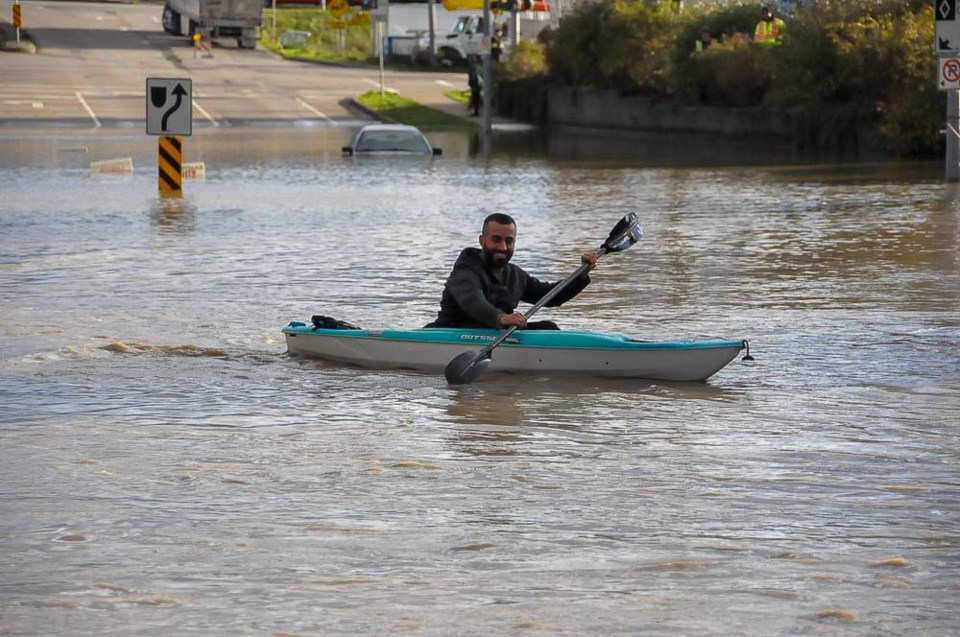
Others, like dairy farmer Karl Meier, evacuated his wife and six children on boats early Tuesday. The farmer and his twin brother spent the rest of the day passing from dry land to their flooded homes, checking on their 200 un-milked dairy cows trapped in several feet of water.
"We couldn't milk the cows this morning. We couldn't risk frying the electricity," he said. "The animals are still there. That's why we're going back."
When asked how he's making sense of the floods, Meier pointed back to the summer's record heat when he said the community endured 65 days of drought. By September, the rain came and hadn't let up since.
"There's nowhere for the water to go," he said of the deluge the night before. "This is the biggest flood in 30 years, like, maybe even 100… These are pretty rare moments."
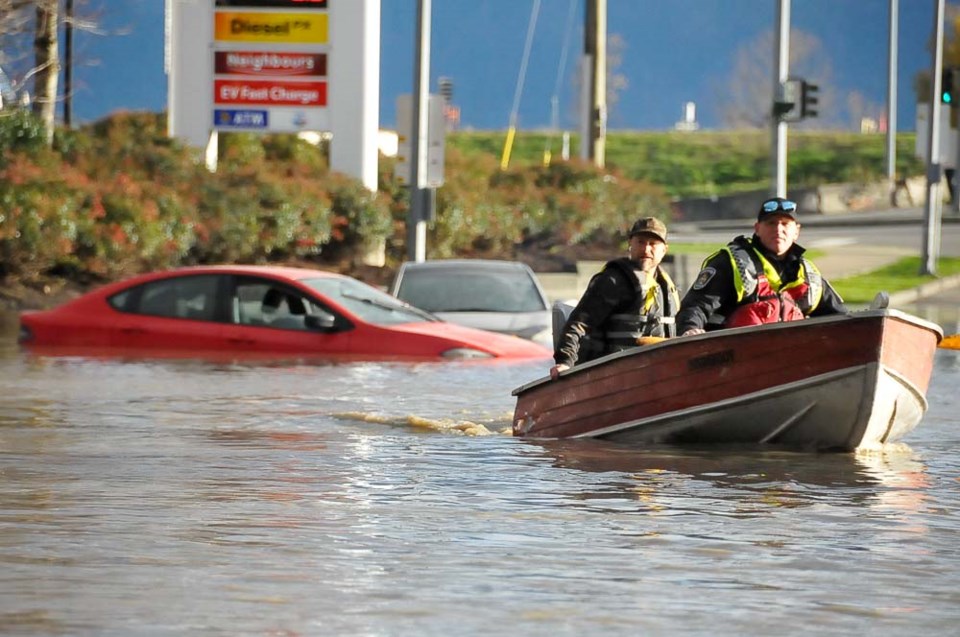
According to the Insurance Bureau of Canada (IBC), the scale of the flooding is right in line with expectations.
The IBC has been tracking climate-related insurance claims since the early 1980s. Between 1983 and 2008, the average annual losses paid out to Canadians because of natural catastrophic events sat at $422 million. Between 2009 and 2020, pay-outs on big claims more than quadrupled to $2 billion every year.
"It's clear the trend line is only going in one direction, and the direction is up," said IBC's Sutherland. "Focus needs to be on life-saving at this point. But as we recover from this event, we can't treat this as a one-off."
Understanding what risk people face by living in flood plains — whether in Merritt, Princeton or Abbotsford — requires good maps. But the flood maps B.C. relies on to make such calls are decades out of date.
"The average age of a flood map in this province goes back to 1980. We need to start to layer the latest climate data," said Sutherland.
Already, water has overtaken fire as the number one cause of insurance in Canada, and that's put more and more pressure on premiums. Sutherland says the only affordable way forward is to prevent the damage in the first place.
For dairy farmer Meier that means more water pumps.
"We rely on pump stations from the diking system. Just get more pumps. That's it," he said. "Need a bigger nail; bring a bigger hammer. It's simple farming."
Sutherland agrees that could work in some cases, but a bigger, more frank conversation must also include questioning where British Columbians have built their homes and businesses across the province.
Sutherland concedes that those conversations will be difficult, especially when strategic retreat could mean losing the family farm.
For farmers like Thandi and Meier, giving up on the farm hasn't crossed their minds.
"We're farmers. We endure," Thandi said.
